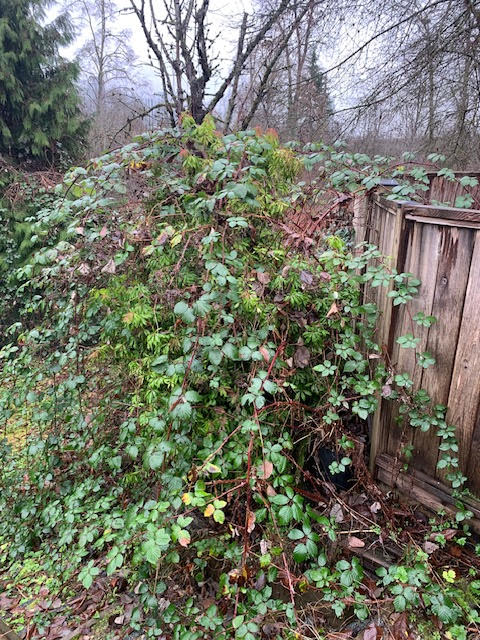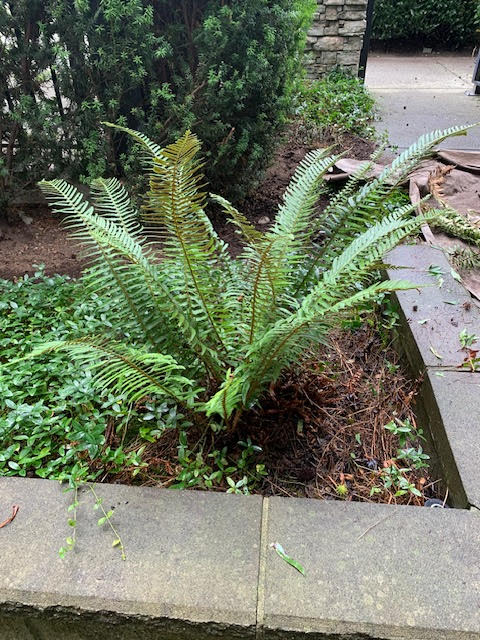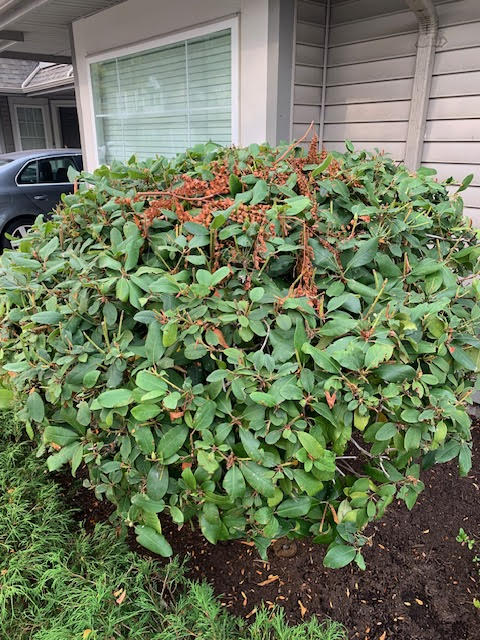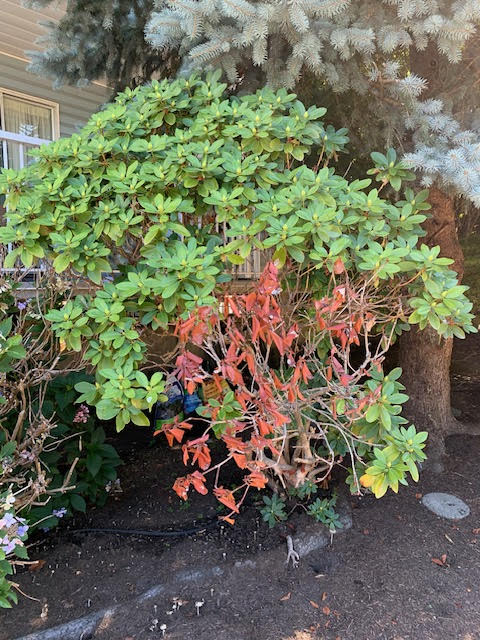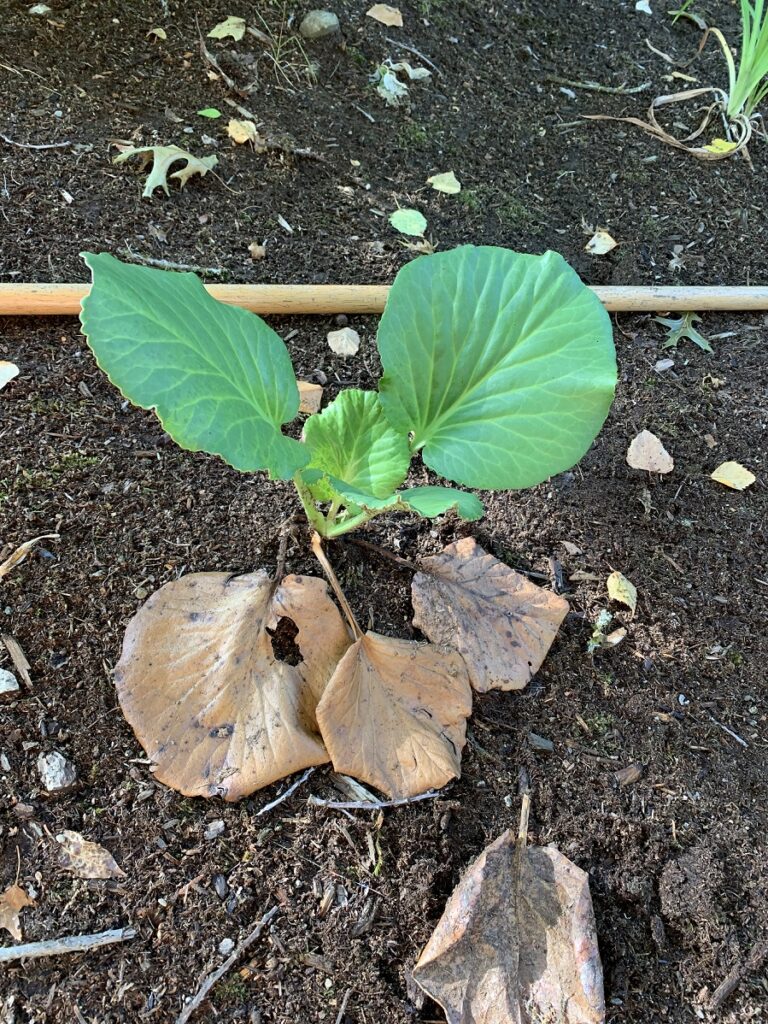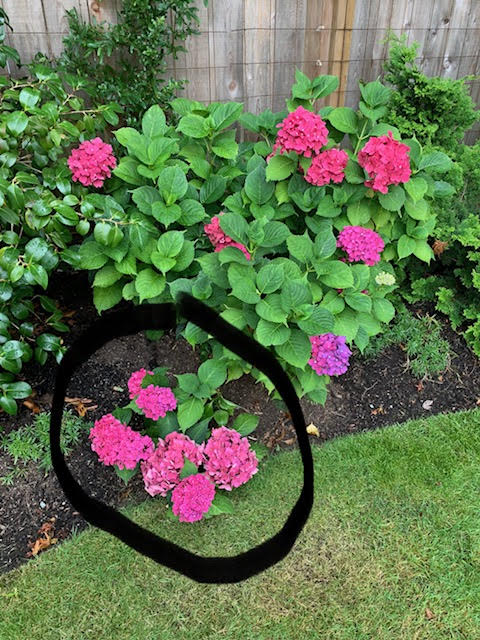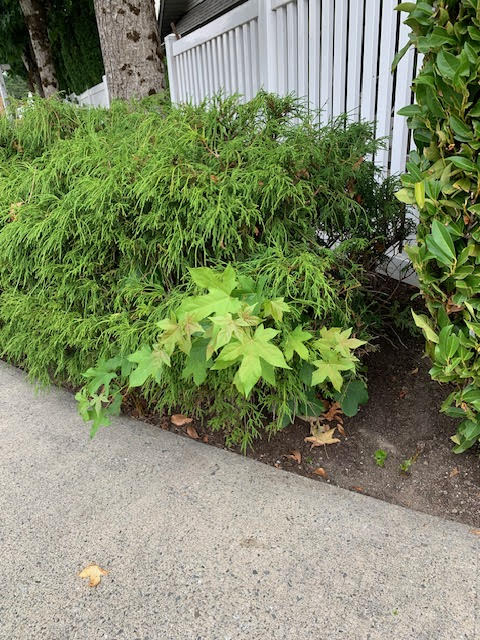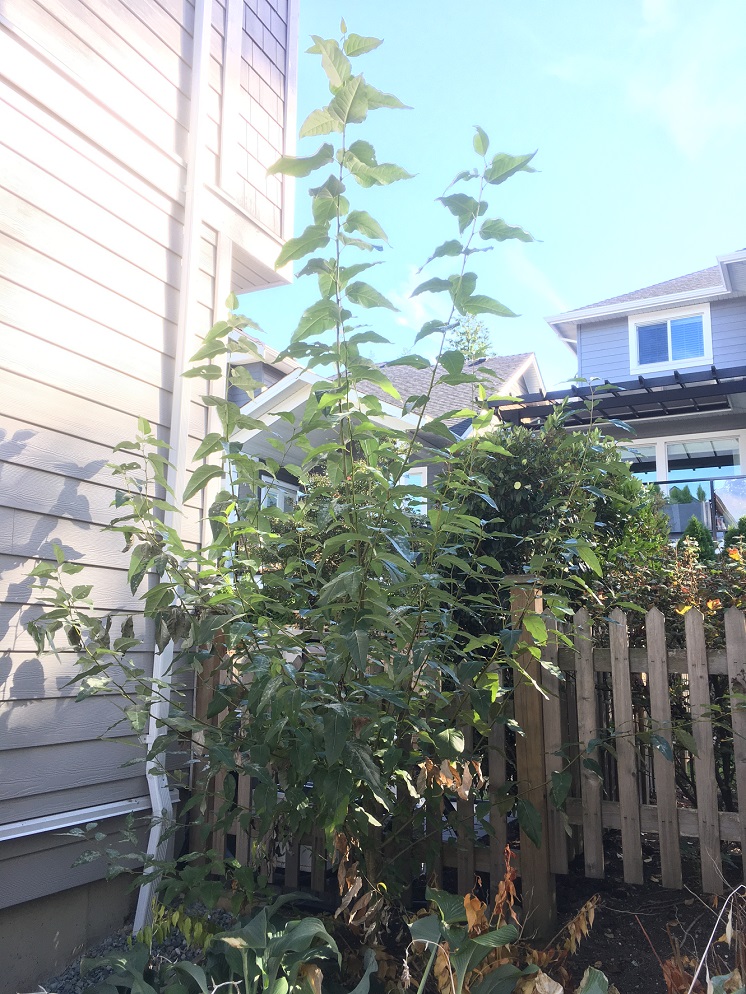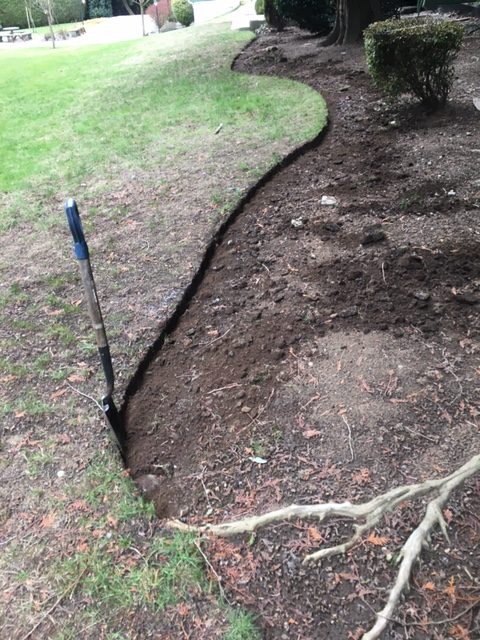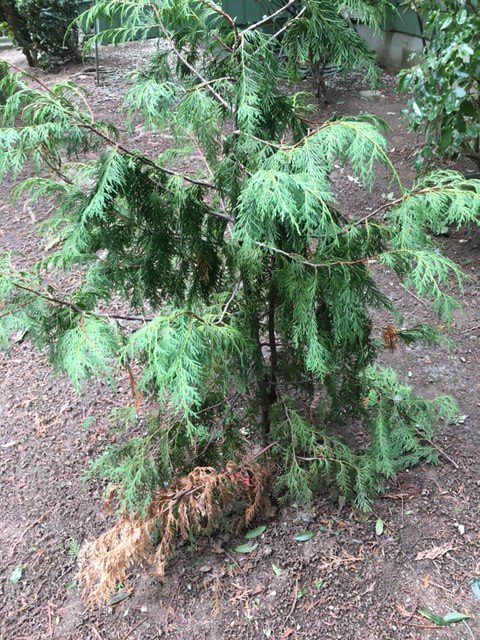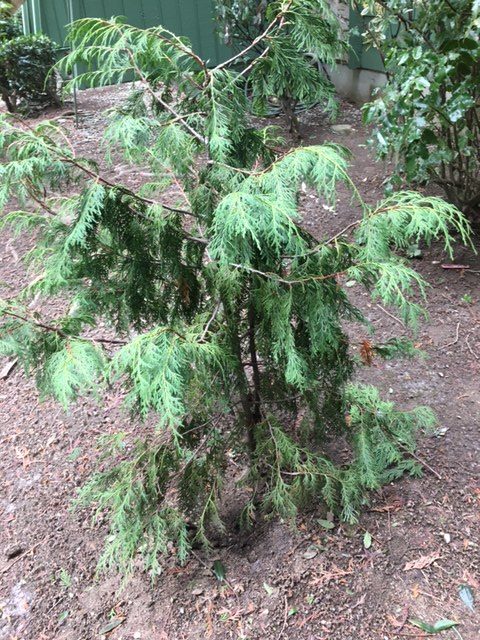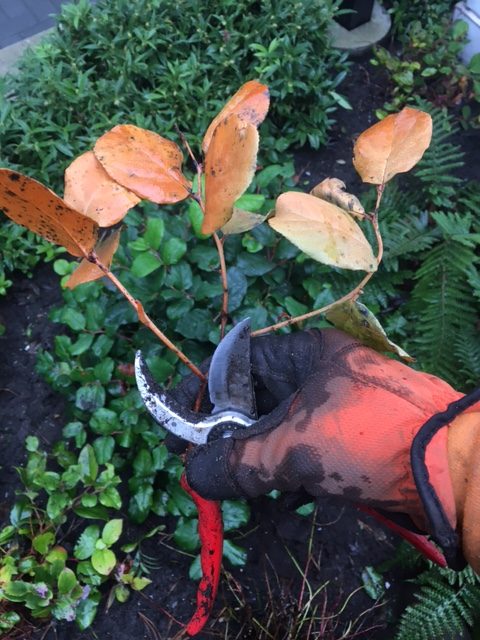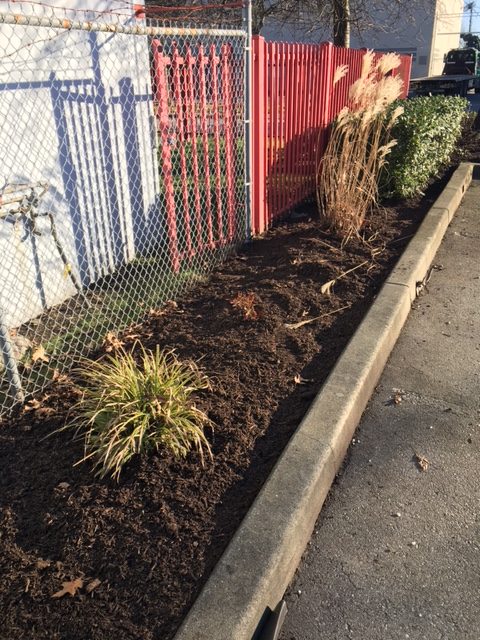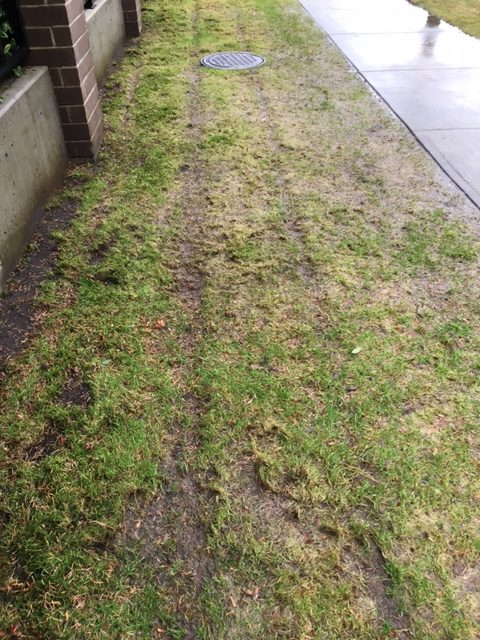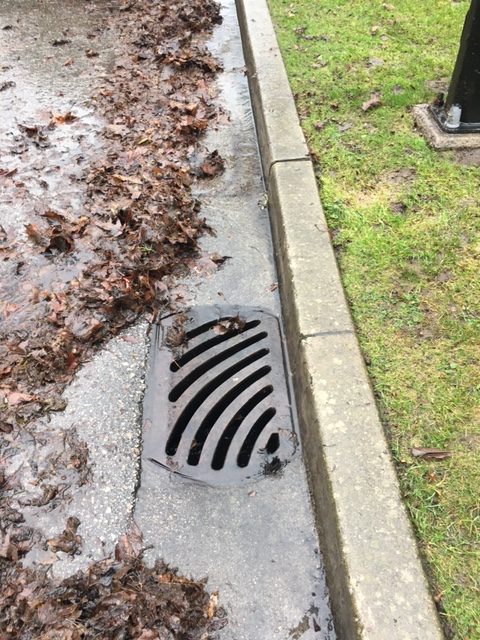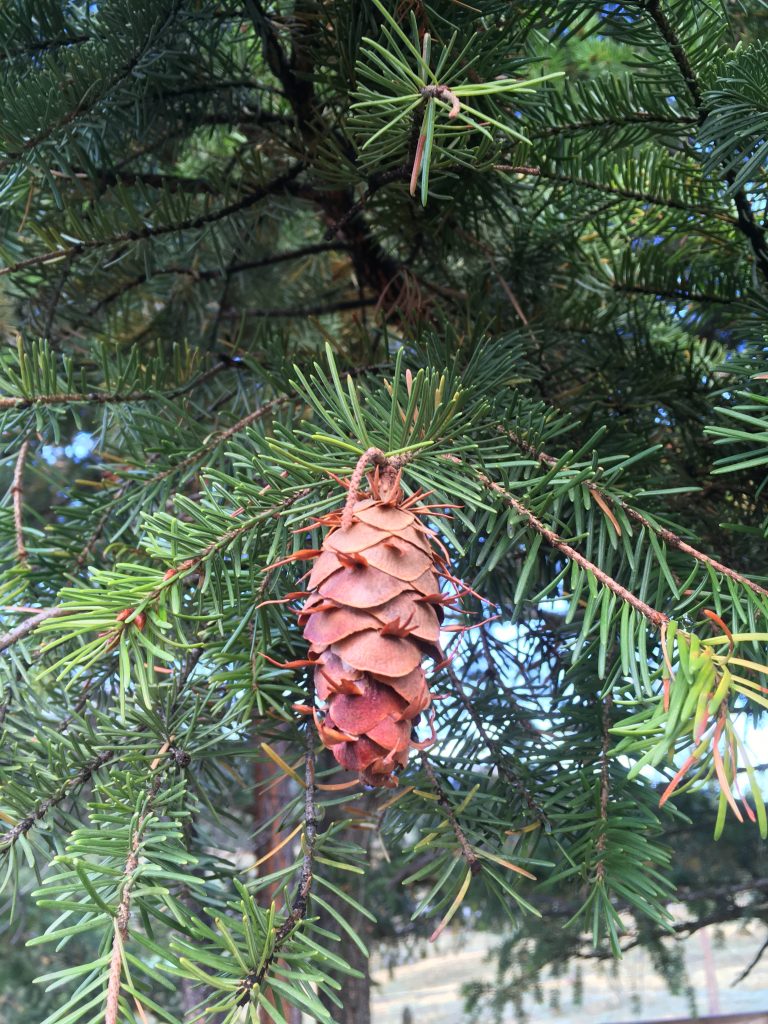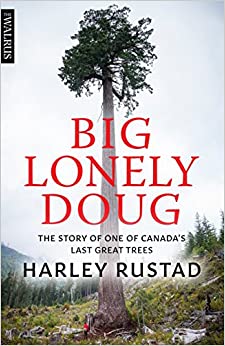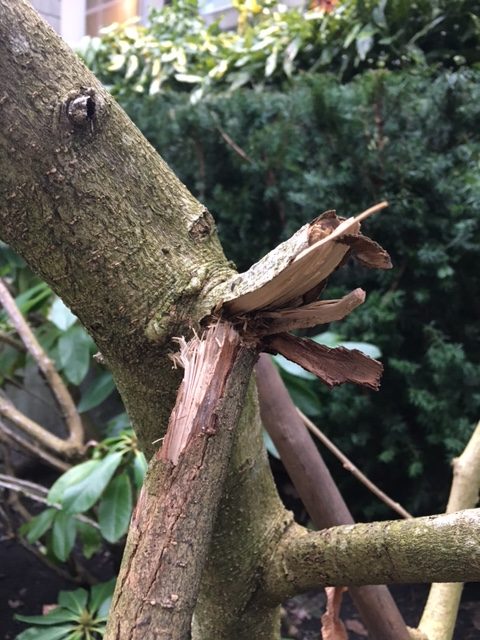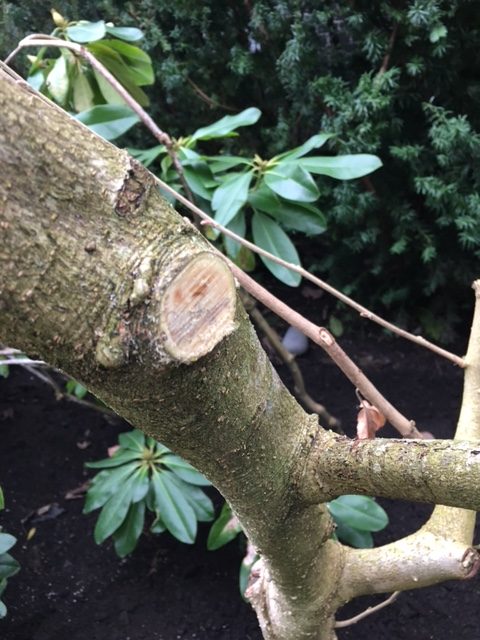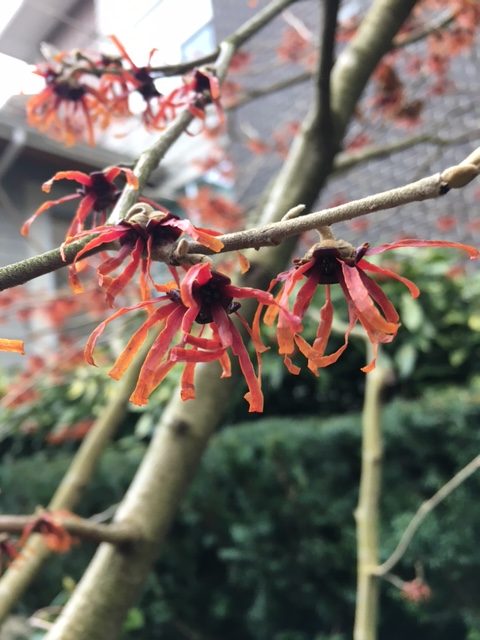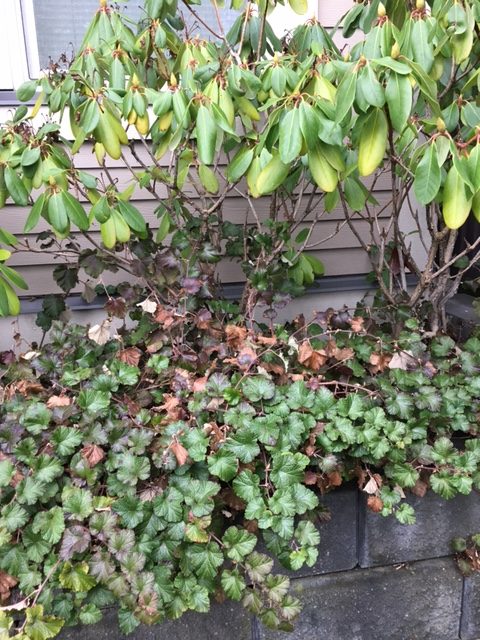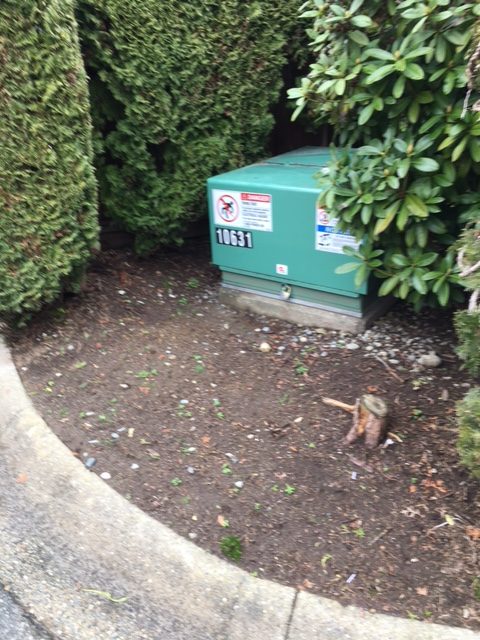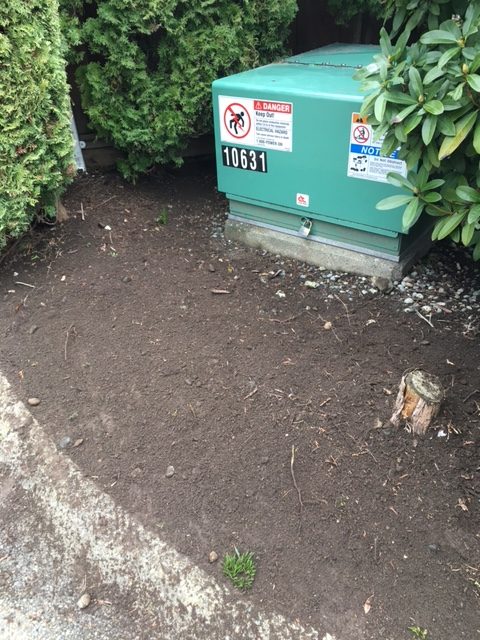Progress!
If you know me well or if you read this blog regularly, you will know that I love to leave ornamental grasses standing in the fall. As long as they are upright and beautiful I let them ornament the landscape until late winter.
Why the rush to turn the grasses into low mounds of nothing? Once they’re gone, there’s no more drama, nothing swaying in the breeze, no resting place for the frost that would have made the flowers stand out.
And yet, I’m happy to report some signs of progress. I’ve seen some landscapes recently where the grasses are still standing, ornamenting the landscape the way they were supposed to. Let’s take a look.
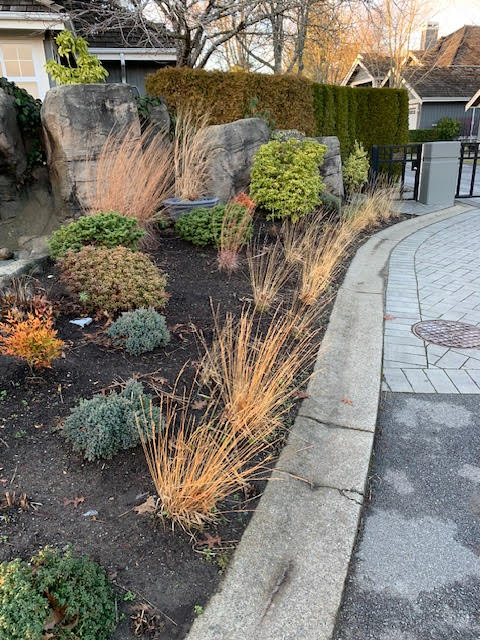
This is a high-profile entrance to an upscale community in White Rock; and look how good everything looks. The grasses move in the wind and when it really cools off later this week, they will look awesome frosty.

This Rocky Point bed in Port Moody has Chinese Windmill palms (Trachycarpus fortunei) and beautiful Calamagrostis Karl Foerster grasses. As far as I’m concerned, it looks awesome!
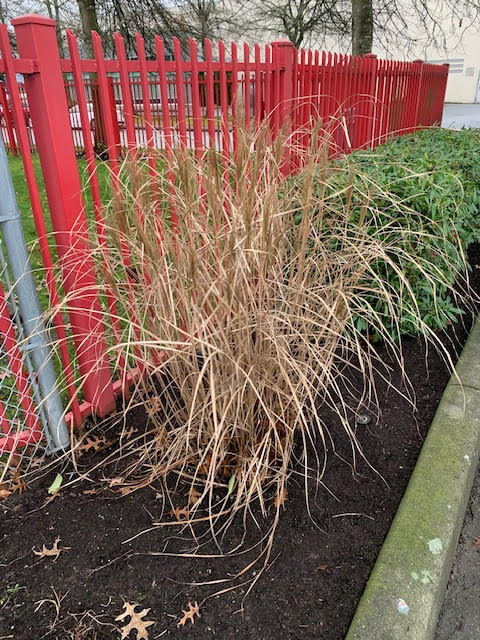
You might have seen this Miscanthus a few times already. It was a rescue and it’s doing fine on my commercial site. I won’t cut it back until later winter.
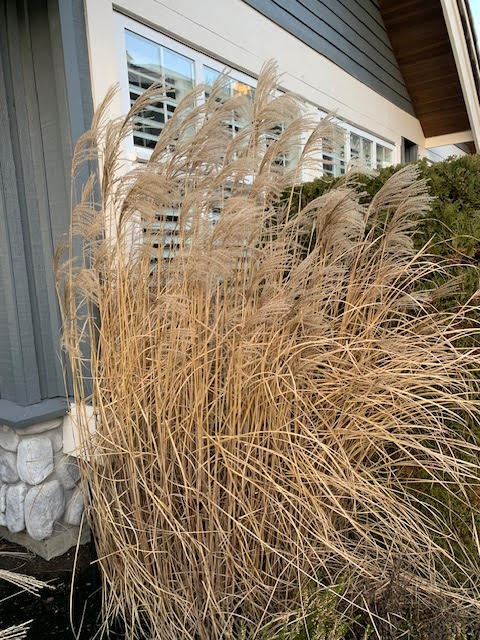
More Miscanthus from White Rock, BC. Wait for a light breeze and see them come alive.
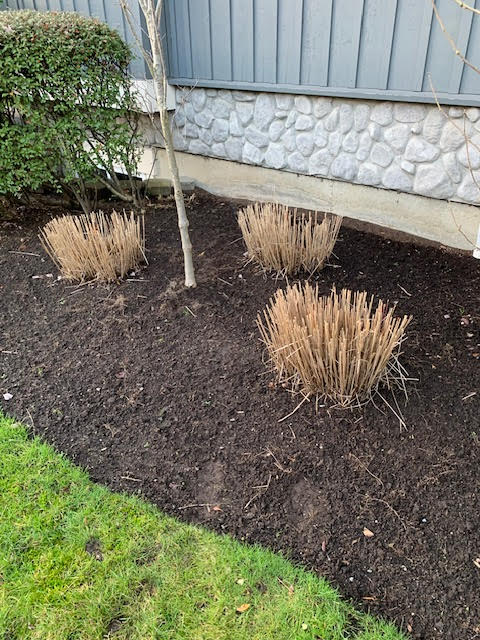
Now, if you do cut them back, don’t leave a foot long stub like the one above. Cut it back low to the ground in a mound shape. Then wait for next year’s growth.
Ornaments
Ornamental grasses add drama to your garden so leave them standing until late winter. Then cut them back before they start to grow again in spring. When you do cut them, make it a low mound. Don’t leave a foot long stub.



